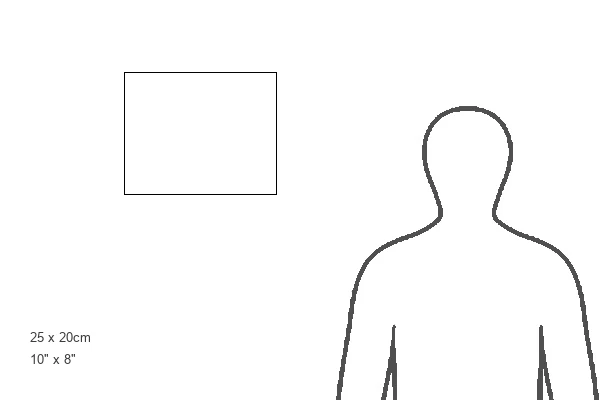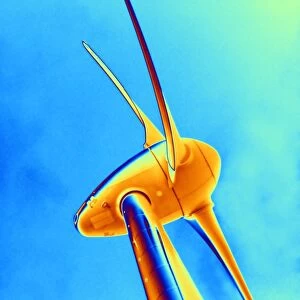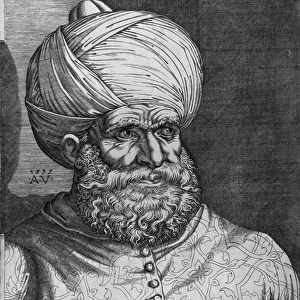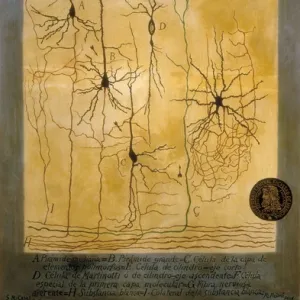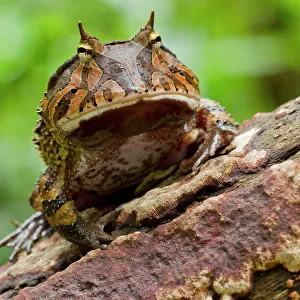Photographic Print > Europe > Italy > Emilia-Romagna > Bologna
Photographic Print : Galvanis discovery, 1780 (1894)
![]()

Photo Prints from Heritage Images
Galvanis discovery, 1780 (1894)
Galvanis discovery, 1780 (1894). Italian physiologist Luigi Galvani experimenting on frogs. A professor working in Bologna, Galvani (1737-1798) performed experiments to investigate the behaviour of muscles stimulated by electricity. Whilst investigating the effects of electrostatic stimuli applied to the muscles of frogs, Galvani discovered he could make a muscle twitch by touching the nerve with metal (a pair of scissors for example) without a source of electrostatic charge. He called this phenomenon animal electricity. The term galvanise - to shock or excite into action, takes its name from him. From A Popular History of Science, by Robert Routledge, BSc (Lond.), F.C.S. [George Routledge & Sons, Limited. London, 1894]. (Colorised black and white print)
Heritage Images features heritage image collections
Media ID 14989631
© The Print Collector
Amphibian Biology Colorised Colourised Discovery Electricity Experiment Frog Laboratory Luigi Physics Robert Routledge Routledge Scientist Galvani Luigi Galvani
10"x8" Photo Print
Experience the intrigue of scientific discovery with our Media Storehouse Photographic Print of Luigi Galvani's groundbreaking moment in 1780, captured in the iconic 1894 image from Heritage Images. Witness the intense focus and curiosity on Galvani's face as he conducts his experiments on frogs in Bologna, Italy. This timeless photograph is a testament to the power of scientific inquiry and the beauty of human curiosity. Bring this historical image into your home or office as a conversation starter and a reminder of the enduring impact of scientific exploration. Order now and let this print inspire and captivate you every day.
Photo prints are produced on Kodak professional photo paper resulting in timeless and breath-taking prints which are also ideal for framing. The colors produced are rich and vivid, with accurate blacks and pristine whites, resulting in prints that are truly timeless and magnificent. Whether you're looking to display your prints in your home, office, or gallery, our range of photographic prints are sure to impress. Dimensions refers to the size of the paper in inches.
Our Photo Prints are in a large range of sizes and are printed on Archival Quality Paper for excellent colour reproduction and longevity. They are ideal for framing (our Framed Prints use these) at a reasonable cost. Alternatives include cheaper Poster Prints and higher quality Fine Art Paper, the choice of which is largely dependant on your budget.
Estimated Product Size is 25.4cm x 20.3cm (10" x 8")
These are individually made so all sizes are approximate
Artwork printed orientated as per the preview above, with landscape (horizontal) or portrait (vertical) orientation to match the source image.
FEATURES IN THESE COLLECTIONS
> Animals
> Amphibians
> Frogs
> Related Images
> Arts
> Artists
> W
> George White
> Arts
> Artists
> W
> Robert White
> Europe
> Italy
> Emilia-Romagna
> Bologna
> Science
> Scientists
EDITORS COMMENTS
This print captures the groundbreaking moment in scientific history when Italian physiologist Luigi Galvani made his remarkable discovery in 1780. In this image, we see Galvani engrossed in his experiment, delicately working with a frog to investigate the behavior of muscles stimulated by electricity. As a professor based in Bologna, Galvani dedicated himself to unraveling the mysteries of muscle movement. It was during his exploration of electrostatic stimuli applied to frog muscles that he stumbled upon an extraordinary phenomenon. He found that simply touching the nerve with metal, such as a pair of scissors, could make the muscle twitch without any external source of electrostatic charge. This incredible revelation led him to coin the term "animal electricity". Galvani's groundbreaking work not only revolutionized our understanding of biology and physiology but also left an indelible mark on language itself. The word "galvanize" meaning to shock or excite into action, owes its origin to this brilliant scientist. The colorized print transports us back to this pivotal moment in science history during the late 18th century. It serves as a testament to Galvani's tireless pursuit of knowledge and highlights his significant contribution towards shaping our understanding of bioelectricity. This fascinating image is sourced from A Popular History of Science by Robert Routledge (1894), showcasing both artistry and scientific curiosity intertwined within one frame.
MADE IN THE USA
Safe Shipping with 30 Day Money Back Guarantee
FREE PERSONALISATION*
We are proud to offer a range of customisation features including Personalised Captions, Color Filters and Picture Zoom Tools
SECURE PAYMENTS
We happily accept a wide range of payment options so you can pay for the things you need in the way that is most convenient for you
* Options may vary by product and licensing agreement. Zoomed Pictures can be adjusted in the Cart.


